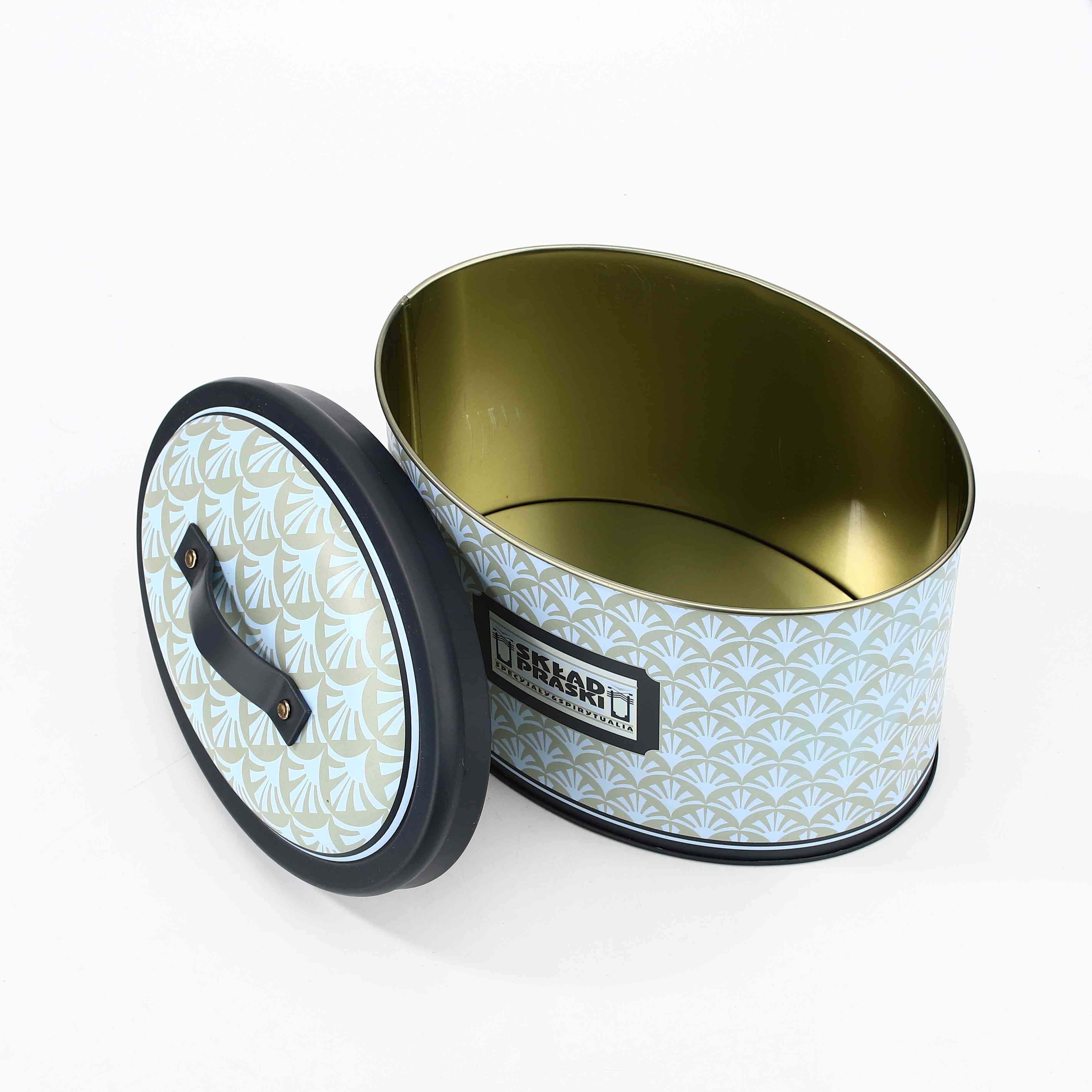ئازار . 11, 2024 10:24 Back to list
TIN PACKAGING FOR FOOD STORAGE AND ENHANCED FOOD PRESERVATION
Tin packaging for food storage has stood the test of time, remaining a popular choice for preservation in an increasingly busy world. Discover the benefits and intricacies of this method, and learn how tin packaging enhances food preservation.
INTRODUCTION TO TIN PACKAGING FOR FOOD STORAGE
Metal packaging, particularly tin, has long been a staple of food storage and preservation, its durable structure and protective properties keeping food items fresh and safe. So, what exactly is tin packaging, and how does it play a vital role in food storage? Let's explore.
WHAT IS TIN PACKAGING?
Tin packaging, also referred to as tinplate packaging, involves using thin sheets of steel coated with a layer of tin. This kind of packaging is commonly used for canned foods like soups, meats, and vegetables. The tin layer prevents the steel from rusting, thus ensuring that the food within remains uncontaminated.
HOW DOES TIN PACKAGING AID IN FOOD STORAGE?
The reason why tin packaging is an excellent option for food storage is simple: it is airtight. This characteristic makes it ideal for long-term food storage as it inhibits the growth of bacteria and other microorganisms that cause food spoilage. Not only does tin packaging keep food fresh, but it also helps maintain the flavor of the stored food, making it an all-around effective solution for food preservation.
THE HISTORY OF TIN PACKAGING FOR FOOD STORAGE
The use of tin for food storage dates back several centuries. Understanding its historical context can provide valuable insights into its current relevance and efficiency.
A BRIEF LOOK BACK
The concept of using tin packaging for food storage was first introduced in the early 19th century. This idea was born out of a need for long-lasting food supplies for military troops. The invention of tin cans revolutionized the food industry, providing a convenient way to preserve and store food for extended periods.
THE EVOLUTION OF TIN PACKAGING
Over the years, advancements in technology have led to significant improvements in tin packaging. The cans have become lighter, more durable, and more sustainable. Innovations like easy-open lids and resealable cans have made tin packaging more user-friendly, enhancing its appeal as a food storage option.
ADVANTAGES OF TIN PACKAGING FOR FOOD STORAGE
Tin packaging offers a multitude of benefits for food storage. Here are a few key reasons why it remains a preferred choice in food preservation.
1. LONG SHELF-LIFE
The primary advantage of using tin packaging for food storage is the extended shelf-life it provides. As tin packaging is airtight and resistant to external factors like light and humidity, it drastically slows down the food degradation process, ensuring that the food remains fresh for longer periods.
2. MAINTAINS NUTRITIONAL VALUE
Another benefit of tin packaging is its ability to maintain the nutritional value of the food. When food is stored in tin packaging, the essential nutrients are sealed in, preserving the food's nutritional content.
3. CONVENIENCE
In the hustle and bustle of everyday life, convenience is key. Tin packaging provides just that. With easy-open lids and resealable options, accessing and storing food has never been easier.
4. SUSTAINABILITY
Tin packaging is recyclable and eco-friendly. This sustainable nature of tin packaging not only benefits the environment but also enhances its appeal in the current era of increasing environmental consciousness.
LEARN HOW TIN PACKAGING ENHANCES FOOD PRESERVATION
Tin packaging's success in enhancing food preservation is a result of its distinctive properties.
THE SCIENCE BEHIND TIN PACKAGING AND FOOD PRESERVATION
Tin packaging's ability to enhance food preservation lies in its airtight nature. Oxygen, water vapor, and microorganisms, all of which accelerate food spoilage, are kept out by the tin package. Simultaneously, the nutrients and flavors of the food are sealed in, ensuring the food stays fresh and tasty.
THE ROLE OF TIN PACKAGING IN PREVENTING FOOD WASTE
In addition to enhancing food preservation, tin packaging plays a crucial role in reducing food waste. By extending the shelf-life of food, tin packaging allows consumers to store food for longer periods without the worry of it going bad, thus minimizing wastage.
THE FUTURE OF TIN PACKAGING FOR FOOD STORAGE
Despite the advent of alternative packaging materials, tin packaging's future looks promising. Let's delve into what we might expect moving forward.
INNOVATIONS AND ADVANCEMENTS
As technology advances, so does tin packaging. Innovations like smart packaging, where sensors could be embedded in the tin to provide information about the food's condition, are on the horizon.
CONTINUED RELEVANCE IN A SUSTAINABLE FUTURE
Given the increasing focus on sustainability, tin packaging, with its recyclable nature, will likely continue to hold its ground in the packaging industry.
CONCLUSION
The value of tin packaging in food storage and preservation is undeniable. From maintaining food freshness to preserving nutritional content and reducing food waste, tin packaging serves an essential role in our daily lives. As we look towards a sustainable future, it's clear that tin packaging for food storage will continue to evolve and remain a pivotal player in the food industry. Learn to appreciate the intricate science behind this humble packaging material - after all, tin packaging truly enhances food preservation!
-
Large Metal Box Manufacturers: Custom, Durable Industrial Solutions
NewsAug.24,2025
-
Large Metal Box Manufacturers | Custom, Durable & Reliable
NewsAug.23,2025
-
Custom Large Metal Box Manufacturers & Suppliers | Durable Solutions
NewsAug.22,2025
-
Top Steel Pail with Lid Manufacturers - Durable & Secure
NewsAug.19,2025
-
Large Metal Box Manufacturers: Custom & Durable Solutions
NewsAug.18,2025
-
Durable Large Metal Box Manufacturers & Custom Solutions
NewsAug.17,2025






















